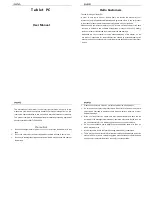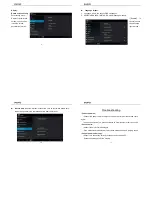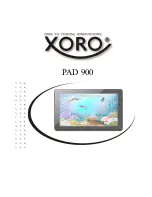
12
--Check the USB cable.
• USB connect is fail
:
--Make sure that the USB device is securely connected to the USB jack.
--Check if the USB device or a cable is damaged.
--If the USB device is connected via a USB hub, connect the USB device directly to
the device.
• Cannot connect the device to the wireless LAN router
:
--Check if the wireless LAN router is on.
--Depending on the surrounding environment, such as the wall material, radio wave
receiving condition, or obstacles between the device and the wireless LAN router, the
communication distance may be shortened. Move the device and the wireless LAN
router closer to each other. Devices that use a 2.4GHz frequency band, such as a
microwave, Bluetooth, or digital cordless device, may interrupt the communication.
13
Move the device away from such devices, or turn off such devices.
• FCC STATEMENT
1. This device complies with Part 15 of the FCC Rules. Operation is subject to the
following two conditions:
(1) This device may not cause harmful interference, and
(2) This device must accept any interference received, including interference
that
may cause
undesired operation.
2. Changes or modifications not expressly approved by the party responsible for
compliance could void the user’s authority to operate the equipment.
This equipment has been tested and found to comply with the limits for a Class B
digital device, pursuant to part 15 of the FCC Rules. These limits are designed to
provide reasonable protection against harmful interference in a residential installation.
14
This equipment generates, uses and can radiate radio frequency energy and, if not
installed and used in accordance with the instructions, may cause harmful
interference to radio communications. However, there is no guarantee that
interference will not occur in a particular installation. If this equipment does cause
harmful interference to radio or television reception, which can be determined by
turning the equipment off and on, the user is encouraged to try to correct the
interference by one or more of the following measures:
—Reorient or relocate the receiving antenna.
—Increase the separation between the equipment and receiver.
—Connect the equipment into an outlet on a circuit different from that to which the
receiver is connected.
—Consult the dealer or an experienced radio/ TV technician for help.
15
• FCC Radiation Exposure Statement:
The device has been evaluated to meet general RF exposure requirement. The
device can be used in portable exposure condition without RF striction.























